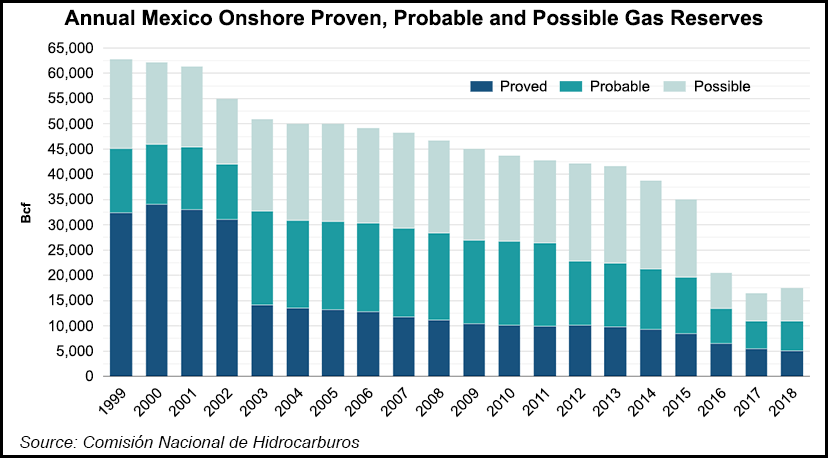Regulatory | Mexico | NGI All News Access | NGI Mexico GPI
Column: Ixachi and the Swirling Questions Around Natural Gas Market Rules — Bonus Coverage
 Editor’s Note: Please enjoy this bonus coverage from NGI’s Mexico Gas Price Index, which includes daily prices, analysis and coverage of the emerging natural gas market in Mexico.
Editor’s Note: Please enjoy this bonus coverage from NGI’s Mexico Gas Price Index, which includes daily prices, analysis and coverage of the emerging natural gas market in Mexico.
Request a Trial | Subscribe

Editor’s Note: NGI’s Mexico Gas Price Index, a leader tracking Mexico natural gas market reform, is offering the following column as part of a regular series on understanding this process, written by Eduardo Prud’homme. This is the eighth in the series.
The week before President Andrés Manuel López Obrador took office, engineers from the exploration and production division at Pemex gave the incoming president some news that buoyed his spirits. They said that a year’s exploration at the Ixachi fieldin southeast Mexico had uncovered 3P reserves that would make it the largest land discovery in Mexico for 25 years. Not only was the field rich in oil, but it also had a lot of gas: up to 700 MMcf/d.
In the six months since, the field has come to represent an opportunity to achieve “energy sovereignty,” a López Obrador rallying cry during his campaign. Ixachi in the Aztec Nahuatl language means abundance, a perfect term to fuel energy patriotism in the Mexican imagination. It also helps strengthen the president’s message that Mexico is rich in resources, and any production failures at the state oil company are due to the “neo-liberal” policies of previous governments.
Regardless of how you look at it, the start of production at Ixachi its excellent news. Its volumes and geographic location have the potential to significantly compensate for the decline in domestic natural gas production in Mexico, while at the same time boosting flows into the gas-deprived southeast.
To read the full article and gain access to more in-depth coverage including natural gas price and flow data surrounding the rapidly evolving Mexico energy markets, check out NGI’s Mexico Gas Price Index.
© 2024 Natural Gas Intelligence. All rights reserved.
ISSN © 1532-1231 | ISSN © 2577-9877 | ISSN © 2577-9966 |
